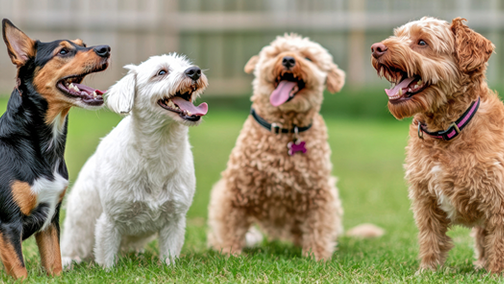Housebreaking Small Dogs and Puppies: A Guide to Success
Housebreaking a small dog or young puppy requires patience, consistency, and an understanding of their physical limitations. Unlike large adult dogs, small dogs and puppies have smaller, developing bladders and lack the ability to “hold it” for extended periods. This means you need to be prepared to take them outside for potty breaks frequently, at least every 2-3 hours, especially during the initial stages of training. Here’s how to effectively housebreak your small dog or puppy and avoid common pitfalls.
1. Understanding Bladder Control in Small Dogs and Puppies
Small dogs and puppies do not have the bladder control that older or larger dogs possess. It’s essential to be diligent and consistent with taking them outside regularly. If your dog is allowed to designate their own spot inside your home, it becomes much harder to correct this behavior later on. The key to success is consistency and timing.
2. Establishing a Routine
Dogs thrive on routine, and having a set schedule for potty breaks is crucial. Choose a specific spot in your yard where you want your dog to go potty, and always use the same door to access this area. This repetition helps your dog associate that spot with the action of going potty, making the training process clearer and more straightforward for them.
3. Supervision Is Key
Never take your eyes off your dog during the housebreaking process. If you cannot actively supervise your dog, consider using a crate or keeping them outside in a safe, enclosed area. Free-roaming access to your home should be earned gradually, one room at a time. By blocking off areas you cannot monitor, you reduce the chances of your dog sneaking off and eliminating inappropriately.
4. Avoiding Indoor Potty Confusion
It’s important to avoid using paper or potty pads inside your home if your goal is to train your dog to go outside. Indoor potty options can confuse your dog, as they might not understand why it’s okay to eliminate inside sometimes but not others. Consistency in location is vital to reinforcing the desired behavior.
5. Using a Command for Potty Training
While your dog is going to the bathroom in the designated spot, use a command word like “potty” to associate the action with the word. Over time, this will allow you to prompt your dog to go on command, which is particularly useful during inclement weather. Remember to praise your dog enthusiastically after they successfully go in the correct spot—this positive reinforcement is crucial for reinforcing the behavior.
6. Managing Water Intake
To help manage your dog’s need to go potty, consider limiting their water intake, especially in the evening. Excessive drinking can lead to more frequent bathroom needs. Also, avoid giving your dog treats like rawhides that are high in salt, as they can increase your dog’s thirst and consequently, the need to urinate more often.
7. Maintaining the Potty Area as a Play-Free Zone
To prevent confusion, avoid playing with your dog in the designated potty area. Your dog needs to understand that this area is strictly for bathroom purposes, not for play. Mixing the two activities can confuse your dog and disrupt their training.
8. Responding to Accidents
If you catch your dog in the act of eliminating inside your home, it’s important to act quickly. Loudly and firmly express your disapproval (e.g., “No! Bad dog!”), then immediately scoop them up—even if they haven’t finished—and take them to the designated potty area. If they finish going potty outside, praise them heavily to reinforce the correct behavior.
If you don’t catch them in the act but find evidence of an accident, take your dog to the scene and scold them, but never rub their nose in it. Instead, follow up with a trip to the designated potty area, and praise them if they go in the correct spot. Dogs are intelligent and can make the connection between the two actions.
9. Timing Potty Breaks
Always take your dog outside to the potty area after key activities:
- Eating
- Drinking
- Waking from a nap
- First thing in the morning
- Last thing before bedtime
- After 10 to 15 minutes of playtime
Whenever your dog becomes excited, they may need to go potty, so be proactive in taking them outside during these times.
Final Thoughts
Housebreaking a small dog or puppy requires patience, consistency, and a clear plan. By understanding their physical limitations, establishing a routine, and providing consistent supervision, you can successfully train your dog to potty outside. Remember to use positive reinforcement and timely corrections to guide your dog toward the desired behavior. With time and effort, your dog will learn the rules and become a well-behaved member of your household.































